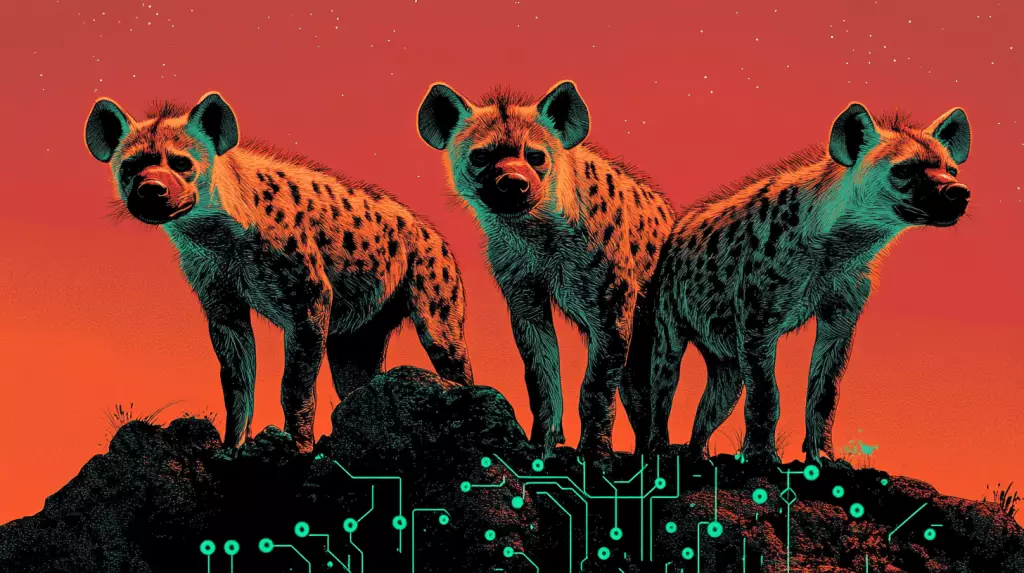In the rapidly evolving world of artificial intelligence, the foundational structures that govern model architectures are critical to advancements in efficiency and capability. Liquid AI, a promising startup from the heart of innovation at the Massachusetts Institute of Technology (MIT), is taking a bold step onto the stage of machine learning by challenging the status quo. Their latest creation, Hyena Edge, signifies a significant departure from the Transformer architecture that has held sway over large language models (LLMs) such as OpenAI’s GPT series or Google’s Gemini line. This move is not merely a technical shift but a paradigm that could redefine the capabilities of AI on mobile and edge devices.
Hyena Edge, unveiled ahead of the prestigious International Conference on Learning Representations (ICLR) 2025, is not just another model; it’s a convolution-based, multi-hybrid approach explicitly designed for smartphones and edge technologies. With mobile applications demanding increasingly sophisticated AI functionalities, this initiative could set the tone for future developments in edge computing.
The Architectural Breakthrough: Hyena Edge
Liquid AI’s engineering team has crafted Hyena Edge with a clear purpose: to surpass the computational benchmarks established by traditional Transformer models while optimizing for performance on mobile devices. Tests on the Samsung Galaxy S24 Ultra have demonstrated that Hyena Edge delivers superior outcomes, achieving lower latency, reduced memory usage, and impressive benchmark results compared to similar parameterized Transformer counterparts. This model decisively shifts away from the heavy-attention mechanisms that often bog down mobile applications, relying instead on gated convolutions derived from the Hyena-Y family.
The innovation behind Hyena Edge is rooted in Liquid AI’s proprietary Synthesis of Tailored Architectures (STAR) framework. By utilizing evolutionary algorithms to explore a diverse range of model configurations, STAR breaks new ground in optimizing for various hardware-specific needs. This holistic design philosophy addresses the critical balance between speed, memory efficiency, and model quality, which has been a longstanding challenge in mobile AI solutions.
Real-World Performance: A Game-Changer for Mobile AI
Hyena Edge’s real-world application is where the rubber meets the road. The model has demonstrated significant improvements in both prefill and decode latencies—key metrics for real-time applications where responsiveness is paramount. In scenarios requiring quick responses, Hyena Edge not only matched but surpassed its Transformer++ peers, showcasing up to 30% faster performance during critical operations. This increase in efficiency breaks traditional performance barriers that have limited the deployment of AI in resource-constrained environments.
Moreover, Hyena Edge’s judicious memory usage offers a promising solution for mobile devices that often grapple with insufficient resources. By requiring less RAM during inference stages, Hyena Edge positions itself as a viable alternative, embodying the aspirations for AI models capable of operating efficiently without the burdens of extensive computational demands.
Benchmarking Excellence: Proving Its Worth
The robustness of Hyena Edge was further established through rigorous testing against well-known benchmarks, including Wikitext, Lambada, and PiQA, among others. This evaluation not only affirmed its competitive prowess but also indicated substantial improvements in perplexity scores and accuracy rates when juxtaposed with traditional models. The fact that performance gains were achieved without a compromise on predictive quality is a significant milestone for the field.
Liquid AI’s commitment to quality assurance through these benchmarks affirms that Hyena Edge extends far beyond the theoretical realm of model design, bringing tangible improvements in performance that can be critically beneficial to developers and end-users alike.
A Glimpse into the Evolution: Behind the Scenes
Liquid AI is generous in sharing the journey of Hyena Edge’s development. A newly released video walkthrough provides an engaging visual representation of the iterative refining process that has brought this innovative model to life. By showcasing the evolution of prefill and decode latencies, as well as operator distribution changes over development iterations, viewers gain an invaluable perspective on how strategic architectural decisions have influenced the model’s success.
The transparency of the developmental stages exemplifies the cutting-edge thinking at Liquid AI—positioning them not just as creators but as thought leaders in the AI landscape. The shifts in attention mechanisms and operator dynamics highlight the art and science of modeling, providing rich insights for future explorations in AI architecture and applications.
Embracing Open Source: A Vision for the Future
Looking ahead, Liquid AI’s announcement to open-source a series of foundation models, including Hyena Edge, stands as a testament to their commitment to fostering innovation in the AI community. By democratizing access to advanced technologies, they aim to inspire further exploration and development of efficient general-purpose AI systems suitable for a wide range of applications, scaling down from powerful cloud-based infrastructures to personal edge devices.
Hyena Edge not only represents a leap forward in architecture but also signals a burgeoning opportunity for alternative approaches to disrupt the prevalent Transformer-dominant landscape. As mobile devices evolve to handle increasingly sophisticated AI tasks, models like Hyena Edge could recalibrate the expectations around what edge-optimized AI can accomplish, setting a new standard for the future of technology.

